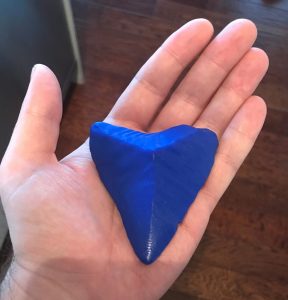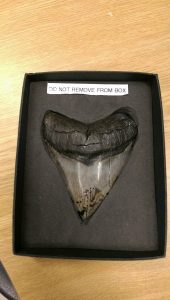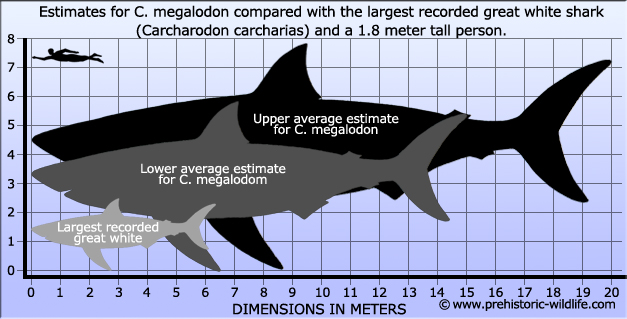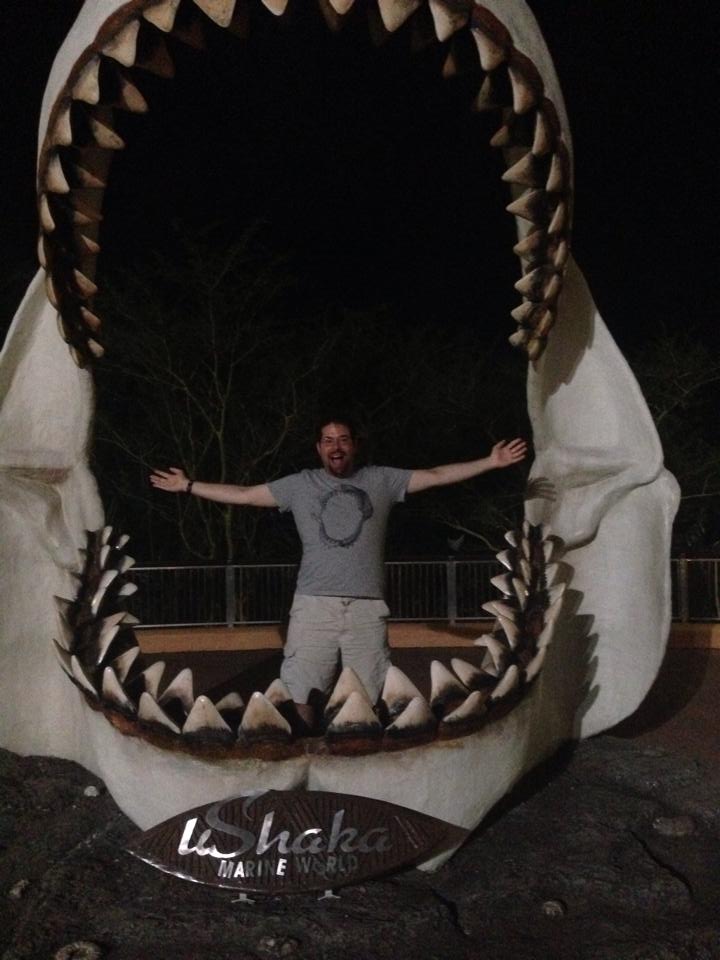 I recently unveiled a new tier of Patreon rewards: 3D printed shark and ray models! For $17 per month, you will get a monthly 3D printed educational model of different shark or ray parts in the mail, and you’ll be supporting my efforts to provide these models to schools for free.
I recently unveiled a new tier of Patreon rewards: 3D printed shark and ray models! For $17 per month, you will get a monthly 3D printed educational model of different shark or ray parts in the mail, and you’ll be supporting my efforts to provide these models to schools for free.
The first month’s reward comes from one of the most (in)famous sharks of all time, Carcharocles megalodon! The first 3D printed Patreon reward is a meg tooth, an exact copy of the meg tooth that has been used to educate thousands of students at UBC’s Beaty Biodiversity Museum!

Here are some things to know about Carcharocles megalodon!
1 Megalodon was the largest shark to ever swim in the ocean! While we don’t know for sure since whole adult sharks don’t fossilize, estimates indicate that that they could grow up to about 50 feet long and weigh up to 50 tons! Their giant teeth were used to bite whales. These teeth, one of the most famous shark fossils, could get up to 7.5 inches long. Great white shark teeth, in contrast, are typically about 2.5 inches long. Megalodon jaws, which contained over 250 of these giant teeth, were so big that an adult human could stand upright inside them! And they may have had the most powerful bite force of any animal ever. They were, in short, a pretty impressive fish.

2 They’re definitely extinct. Notice how I said that megalodon was the largest shark ever, and not is the largest shark ever? That’s because they’re extinct. The best available evidence suggests that they went extinct about 2.6 million years ago. Leading theories suggest that they died out due to competition from newly-evolved cooperatively-hunting orcas, or possibly due to factors associated with climate change, but we know that they are definitely extinct. Shark Week lied to you, there is absolutely no evidence that megalodon is still around. Dr. Craig McClain has a great rundown of how we know for sure that they aren’t around anymore over at Deep Sea News, and check out my Daily Beast article summarizing the controversy with Shark Week’s fake documentary.
I asked Dr. Catalina Pimiento of the Naturkunde Museum in Berlin about why these sharks went extinct:
“Our research suggest that Megalodon became extinct because it could not found enough food to sustain its metabolic demands. Around 2.6 million years ago, coastal areas were significantly reduced due to sea level changes. The resultant habitat loss triggered the extinction of one third of the global marine megafauna, many of which Megalodon preyed upon. Accordingly, coastal habitats were shirked, Megalodon’s prey were less available and consequently, Megalodon became extinct.” – Dr. Catalina Pimiento
3 We used to think that they were the ancestor of modern great white sharks, but new evidence suggests otherwise. Megalodon previously had the genus name Carcharodon, the same as modern great white sharks (a name given to them by Louis Agassiz, the father of U.S. marine biology). Now they are considered to be part of not only a different genus (Carcharocles), but a whole other family (Odontidae, of which all 4 known species are extinct).
I asked Dr. Dana Ehret, the assistant curator of natural history at the New Jersey state museum and the author of that paper, about this:
“The reason many early paleontologists thought Megalodon was the ancestor to the Great White shark was due to the similar shape of their teeth. Recent discoveries of fossil Great White shark jaws and teeth from Peru show that there are more shared characters of modern Great Whites and fossil Mako sharks. The shape and serrations seen in Megalodon teeth are due to convergent evolution. White sharks and Megalodon both eat marine mammals as part of their diet and so their teeth evolved to look similar. Great White sharks evolved from fossil Makos as marine mammals diversified during the Miocene time period which opened a new ecological niche.”- Dr. Dana Ehret.
4 They used to live in shallow coastal waters all over the world. Fossil megalodon teeth have been found on six continents! They are known to have used shallow coastal nursery areas for the early years of their life. Nursery areas are safe from predators (nothing could touch an adult megalodon but pups were vulnerable) and rich in prey, and the use of these areas is common in modern sharks.
5 They are a popular villain of science fiction movies, giving them pop culture cred unmatched by any shark species other than modern great whites. Shark Attack 3: megalodon is a classic, though it never really addressed how megalodon survived extinction. In the Mega Shark trilogy (mega shark v s. giant octopus, mega shark vs. crocosaurus, and mega shark vs. mecha shark) a population megalodons froze inside a glacier, which melted due to climate change and freed them. Finally, “the Meg” (starring Jason Statham, based on a bestselling book series) is coming out later this year. “The meg” and the associated books claim that megalodons survived extinction by moving to very deep water, which would be…. a radical departure from everything that is known about their life history and behavior, to put it mildly. (These books also claim that mammals and reptiles evolved gills to live in deep water with the megalodons).
